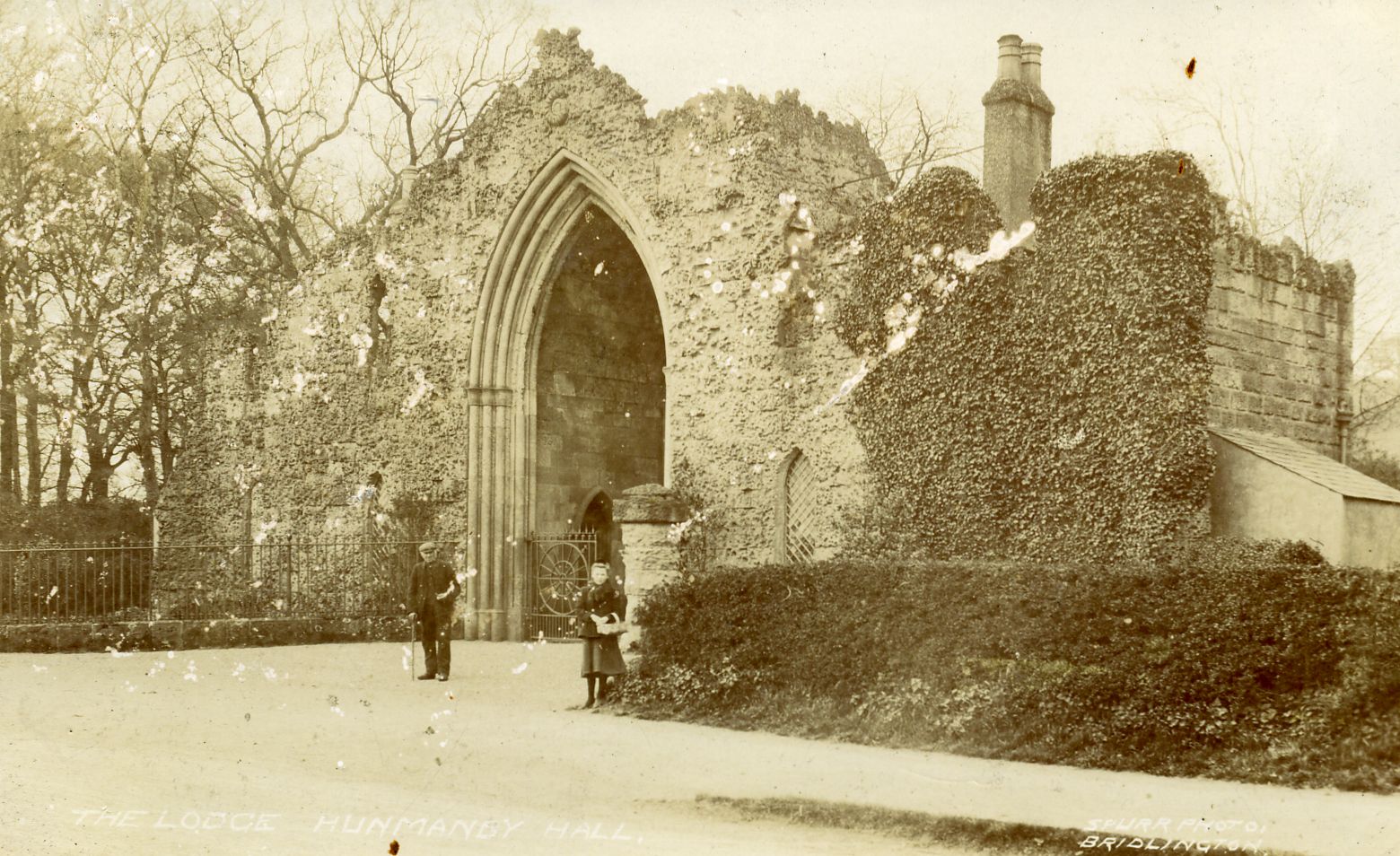THE LOW LODGE. BRIDLINGTON STREET, HUNMANBY.
By
Ces.Mowthorpe. (Copyright 2008.)

When Humphrey Osbaldeston, Lord of the Hunmanby Manor (1770-1835) enclosed in 1809, he formed the Hall Park, bounded by a plantation. To do this he had to build a roadway at the southern boundary, known today as New Road Hill. Previous to Hall Park, the entrance to Hunmanby Hall was via the Round Lodge (demolished in the 1960's) which stood to the south of the West end of Garton Lane, within the aforesaid plantation.. Humphrey Osbaldeston extended his driveway from the old Round Lodge, down to an entrance on Bridlington Street. An old village street believed to be called ’Crackupp’ was completely demolished (the tenants being re-housed in rows of cottages built in Bridlington street and Hungate Lane) which formed the basis of the new driveway. This took quite a few years to complete and it was 1825 before he completed the Low Lodge.
The Low Lodge was constructed in the form of a ruined gateway when viewed from Bridlington Street.. The stone was brought from Filey Brig and a large ammonite from Speeton cliffs affixed above the arch. This ammonite fell to the ground and smashed during a storm in the early 1990's. When facing the Archway from Bridlington Street there was built to the rear a living-room and kitchen, entered from a front door on the left of the Archway. To the right were two bedrooms, entered from a doorway on the right of the Archway. Hence the Lodgekeeper, whose residence it was, had to cross over the driveway to get from the living-room to bedroom and vice versa. Despite this unusual arrangement, it was in its day, a desirable residence. Water was obtained from the guttering into a water butt. An outside earth closet was to the rear. All rooms had fireplaces and windows. The Lodge-keeper was on duty day and night to open the gates for milord or his friends and keep his main entrance to Hunmanby Hall private.
The Low Lodge was in regular use until the early years of the 20th century when Sir Denis Readhead Bayley became a tenant of the Hall c.1900. He soon instituted the Cross Hill entrance, which was more suitable for the new-fangled motor traffic but still the main driveway was used on many occasions. The last true lodge-keeper was Mr Witty and he was followed by various tenants, not lodge-keepers but estate tenants who were in need of housing. The last tenant to live there was Mr Sharpe and family, whom had to be re-housed suddenly, due to the sudden death of Mr Sharpe's previous employer with whom Mr Sharpe held a tied cottage. Mr Sharpe left about 1926.
When the School bought Hunmanby Hall the Low Lodge was used for storage. During World War 2 it was taken over by the Army and used as a fuel depot. About 1943, a serious fire started but was quickly put out by the Hunmanby AFS. This was fortunate because thousands of gallons of petrol were stored in the old thin 4-gallon tins. The gates and railings were taken away for scrap in 1940, replaced after the war. A Crusader tank crashed into the northern wall on Bridlington Street in 1944 but the damage was quickly made good.
The drive was purely private until Lord Nunburnholme bought the Hall in 1920. He opened up the ‘walks’ around the Hall plantation to villagers, his wife planting thousands of bluebells therein assisted by senior members of the village school.
The "new" gates, with armorial badges were displayed at a post-war Yorkshire Show as an excellent example of a Blacksmith's craft and the Low Lodge was used for storage by Hunmanby Hall School - occasionally the Hunmanby Hall Girl Guides ‘camped-out’ therein. Due to vandalism it became necessary to lock these gates in the late 1960’s. When Hunmanby Hall was sold the Low Lodge, land and bursars bungalow were purchased by Mr Whitaker who subsequently converted the Low Lodge into two very desirable holiday homes.
